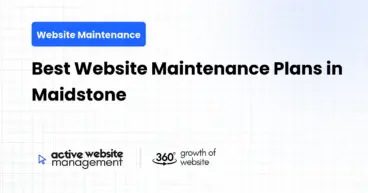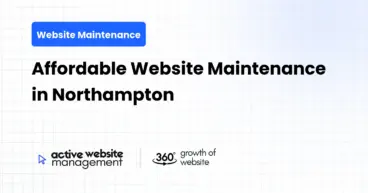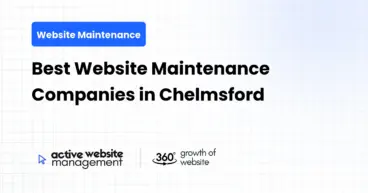December 18, 2024
8 min read
Laravel is one of the most popular PHP frameworks for building modern, robust, and scalable web applications. It’s known for its elegant syntax, ease of use, and powerful features that help developers build high-quality websites and applications quickly. However, like any other complex system, a Laravel website requires ongoing attention to maintain its performance, security, and functionality over time. Regular maintenance is essential to ensure that your website remains fast, secure, and user-friendly.
In this article, we’ll explore how regular maintenance improves your Laravel website’s performance, the best practices for maintaining a Laravel site, and the importance of staying proactive in your website management. By the end of this guide, you’ll have a comprehensive understanding of how regular website maintenance can contribute to the long-term success of your Laravel website.
1. Why Regular Maintenance is Crucial for Your Laravel Website
Websites built on the Laravel framework offer a wide range of powerful features, such as routing, authentication, and database management. However, as with any complex web application, performance can degrade over time due to several factors, including outdated software, unused code, and growing databases. Here’s why regular maintenance is critical:
- Improves Load Speed
Over time, as your website grows and more content is added, performance can suffer if it’s not properly maintained. Regular updates and optimization processes ensure that the website remains fast, providing users with a seamless experience. - Ensures Compatibility with Updates
Laravel and its dependencies are frequently updated to introduce new features and improve security. Regular maintenance ensures that your website remains compatible with the latest Laravel versions and PHP releases. - Boosts Security
Keeping your Laravel website up-to-date with security patches is essential to protect it from vulnerabilities. Cyberattacks can exploit outdated versions of software, making it crucial to regularly update your website’s code and third-party packages. - Enhances User Experience
A well-maintained website is easier to navigate, functions more smoothly, and provides a better overall experience for visitors. Regular testing and optimization improve the functionality and responsiveness of your Laravel website. - Minimizes Downtime
Without regular maintenance, your website may experience unexpected crashes or downtime. A proactive maintenance strategy reduces the risk of such issues and ensures your site remains operational.
2. Key Areas of Laravel Website Maintenance
To keep your Laravel website in top shape, you need to focus on several key areas during your maintenance routine. These areas are crucial for maintaining performance, security, and functionality:
1. Laravel Version Updates
Laravel is constantly evolving with new features, bug fixes, and security improvements. It’s essential to keep your Laravel version up-to-date to take advantage of these improvements. Regular updates prevent your website from using deprecated features and outdated security protocols.
Don’t Just Maintain Your Website—
Grow It using Active Website Management! Don't Wait for Growth—Accelerate It with Active Website Management
How to Perform Laravel Version Updates:
- Check for Updates: Regularly check the official Laravel website or GitHub repository for the latest version.
- Backup Your Website: Always back up your website and database before performing an update.
- Upgrade Dependencies: Ensure that all dependencies, including PHP and any Composer packages, are updated.
- Test After Updates: After updating the framework and dependencies, thoroughly test your website to ensure everything works as expected.
2. Database Optimization
Laravel websites often rely on complex databases to store user data, content, and other essential information. Over time, databases can become bloated and slow, leading to performance issues.
How to Optimize Your Laravel Database:
- Clear Unused Data: Regularly clear out old records or logs that are no longer needed. This can include deleted user accounts, old transactions, or unused tables.
- Optimize Queries: Review your database queries to ensure they are optimized. Use Laravel’s built-in query builder to improve the efficiency of your SQL queries.
- Indexing: Make sure that your database tables are properly indexed to speed up searches and queries.
- Database Backups: Schedule regular backups to avoid data loss in case of an emergency.
You can learn more about database optimization in our article on optimizing WooCommerce databases.
3. Codebase Clean-Up
As your Laravel project grows, the codebase may accumulate redundant code, unnecessary comments, or deprecated functions. Regularly cleaning up your code helps ensure that it’s easier to maintain and faster to execute.
How to Clean Up Your Laravel Code:
- Remove Unused Code: Get rid of unused routes, models, controllers, and views.
- Refactor Code: Refactor your code to make it more efficient and easier to read. This includes optimizing loops, functions, and logic.
- Code Reviews: Perform regular code reviews to identify areas of improvement and ensure your code follows best practices.
4. Cache Management
Laravel uses caching to speed up data retrieval and reduce load times for frequently accessed resources. However, if cache files grow too large or are not cleared regularly, they can slow down your website’s performance.
How to Manage Laravel Caches:
- Clear Cache Regularly: Use the command
php artisan cache:clear to remove stale cache data. - Optimize Cache Configuration: Ensure that your cache drivers (e.g., Redis, Memcached) are properly configured to handle the load.
- Monitor Cache Size: Regularly monitor the size of your cache to ensure it doesn’t grow beyond optimal limits.
For more details on how to enhance website performance through caching, see our blog on caching WooCommerce performance.
5. Security Patches and Vulnerability Fixes
Laravel is a secure framework, but like all software, it can have security vulnerabilities that need to be addressed. Failing to apply security patches and updates can expose your site to hacking attempts.
How to Improve Laravel Website Security:
- Regularly Update Dependencies: Ensure that all your Laravel packages are updated, including those from Composer.
- Use Laravel’s Built-In Security Features: Utilize Laravel’s built-in authentication, hashing, and validation mechanisms to keep your website secure.
- Monitor for Vulnerabilities: Use tools like OWASP ZAP or Nmap to scan your website for potential vulnerabilities.
You can read more on securing your website in our article on website security in 2024.
Don't Wait for Growth—Accelerate It with
Active Website Management Don't Wait for Growth—Accelerate It with Active Website Management
6. Backup and Disaster Recovery
Having a reliable backup and disaster recovery plan is essential for any Laravel website. If anything goes wrong, such as a server failure, you’ll want to restore your website as quickly as possible.
How to Implement Effective Backups:
- Automated Backups: Set up automated backups using Laravel’s built-in Artisan commands or third-party tools.
- Store Backups Off-Site: Use cloud storage solutions like AWS S3 or Google Cloud to store your backups securely.
- Test Your Backups: Regularly test your backup restoration process to ensure that it works when you need it.
Active website management is a proactive approach to maintaining your website and ensuring that it continues to perform optimally over time. It involves regular monitoring, performance optimization, security updates, and content management, all of which are essential for ensuring the health and performance of your Laravel website.
Why Active Website Management is Important:
- Continuous Monitoring: Regular monitoring of website performance helps identify issues before they become critical. Tools like Google Analytics and Laravel’s built-in logs can help track performance metrics.
- Improved SEO: Ongoing optimization helps improve your website’s search engine rankings. A fast, secure website is more likely to rank higher on Google, bringing in more organic traffic.
- Cost Savings: By addressing issues early through active management, you can avoid costly repairs and downtime later on.
At Active Website Management, we specialize in providing ongoing website management services that ensure your Laravel website is performing at its best. Whether you need help with security, optimization, or updates, we offer the expertise to keep your site running smoothly.
4. Conclusion
Regular maintenance is the key to ensuring that your Laravel website performs optimally, remains secure, and continues to provide a great user experience. By staying on top of Laravel version updates, database optimization, code cleanup, cache management, security patches, and backups, you can avoid performance degradation and security vulnerabilities.
Active website management adds an extra layer of reliability by proactively monitoring your site and addressing potential issues before they become major problems. By implementing these best practices, you can ensure the long-term success and sustainability of your Laravel website.
For more insights into website maintenance and management, check out our website care checklist and our guide on website performance audits.
Regular maintenance isn’t just a necessity—it’s an investment in the longevity and success of your Laravel websit






